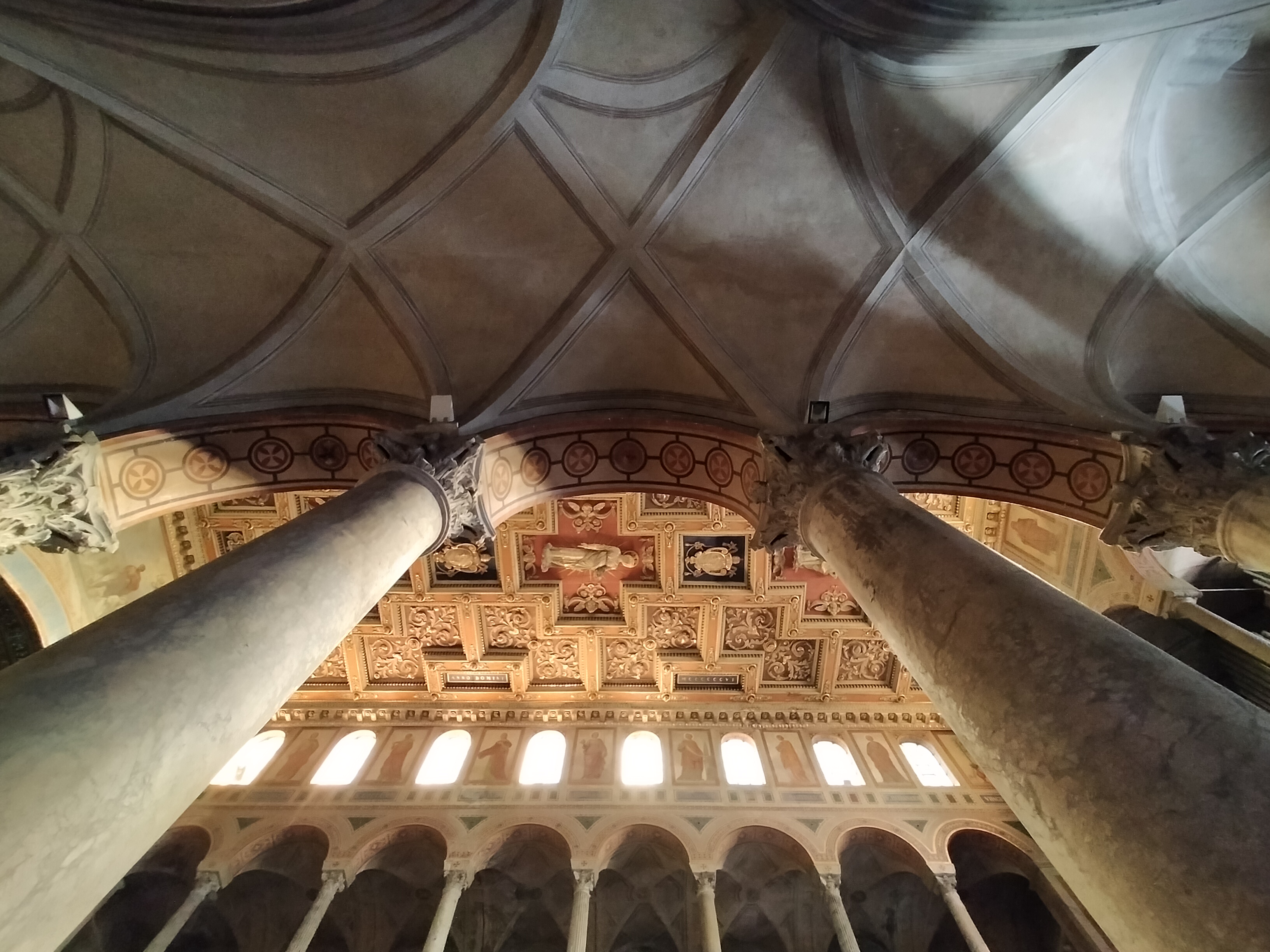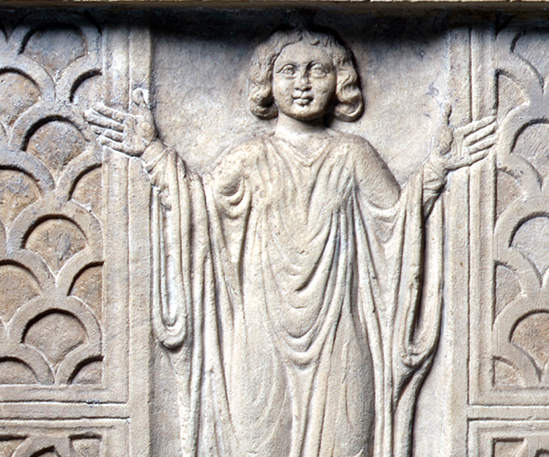The catacombs are underground areas that were born between the end of the second and the beginning of the third century AD, used for the burial and funeral commemoration of the members of the Christian community. These burial grounds were dug mainly in the tuff and in the pozzolana, as well as in other types of soil characterized by ease of processing and great resistance, such as to guarantee the creation of complex systems of tunnels and cubicles structured on different floors. Some of these rooms are richly decorated, others have housed the tombs of the martyrs who during the Middle Ages attracted the devotion of numerous pilgrims.
Saint Agnes is a very famous and venerated Roman martyr: there are good elements to believe she was a martyr at the time of Decius or Valerian, even if some consider her a victim of the persecution of Diocletian.
She died when she was only 12 years old: Pope Damasus refers to a stake in which the saint would have thrown herself. After her martyrdom, the body of little Agnes was placed in a hypogeum owned by her family, on the left of Via Nomentana, where there was already a surface necropolis with individual tombs and mausoleums.
From this original hypogeum, with the insertion of the venerated tomb, a vast community catacomb network will soon develop underground.
The object of particular attention was the tomb of Agnes which at the time of Pope Liberius (352-366) was decorated with marble slabs: one of these slabs is probably the one currently exhibited in the entrance staircase of the honorian basilica and which represents a young girl in prayerful attitude between two panels with geometric motif.
Pope Damasus (366-384) also intervened on Agnes's tomb: the inscription he dedicated to the martyr is now posted in the staircase.
The deep devotion that the Romans nourished over the centuries for the young martyr contributed to embellish her sanctuary with a series of buildings on the surface.
A short distance from the venerated burial of the martyr, perhaps in an imperial property, a basilica in the shape of a Roman circus with an atrium was built at the behest of Constantine (or Constance), daughter of Emperor Constantine and a great devotee of Agnes.
Honorius I (625-638) raised the current basilica on Via Nomentana which is semi-underground, reachable from the majestic staircase; the interior, preceded by a narthex, has three naves, above which a women's gallery runs.
The mosaic in the apse is a splendid testimony of early medieval Roman mosaic art: it represents Agnes between Pope Honorius, who carries a model of the church in her hand, and, probably, Pope Symmachus.
Full tickets € 12,00 (Ticket € 10,00 + Booking fee € 2,00)
Reduced tickets € 9,00 (Ticket € 7,00 + Booking fee € 2,00)
Free tickets
Languages available for guided tours: Italian, English, French, Spanish and German.
For others entrance times, languages and available days please write to info@omniavaticanrome.org
ANTI COVID SECURITY MEASURES:
Please:
SAINT AGNES
Address: Via Nomentana, 349 / The ticket office is located in Via di S.Agnese, 3

Our commitment is to offer pilgrims and visitors, through the catacombs, an experience of communion with the testimonies of the first Christian communities, which tell and illustrate, in an extremely suggestive way, the roots of faith and the horizon of Christian hope.
Mons. Pasquale Iacobone
President of the Pontifical Commission for Sacred Archaeology

In the Catacomb of Saint Agnes, the first region, on the left side of the basilica, is where the tomb of Agnes was placed, a place that has always been revered and where, even today, it is possible to see the urn with the relics of the martyr. Leaving the catacomb, you pass through the Basilica of Pope Honorius with the 6th century apse mosaic that shows the young martyr between the commissioning pope and his predecessor Symmachus.
Walking along the wide staircase, along whose walls you can admire various finds from the underground rooms, you reach the surface where the remains of the Constantinian Basilica are, of which only the walls, with the apsidal curve, pierced by windows, are preserved and the Mausoleum that Constantino erected as her burial. The monument is rich in mosaics dating back to the fourth century, among the oldest examples of this art in Rome.
hide